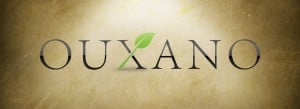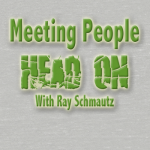 Ouxano 69: Key Things To Consider Regarding Old Testament History [ 15:12 ] Play Now | Play in Popup | Download
Ouxano 69: Key Things To Consider Regarding Old Testament History [ 15:12 ] Play Now | Play in Popup | Download
The stories of the early nation of Israel begin in the first book of the Old Testament, Genesis, and continues through the Book of Esther, with portions of Jonah and Daniel as well. In order to get you into the feel of what it’s like to be in the ancient times that these books took place, we’re going to go through some general guidelines that will help you understand the text much easier as you read. Remember, some of these people lived up to 4,000 years ago. That is a long time ago in a world that was very different from ours today. Therefore, we need to take into consideration the culture and society that these people lived in.
The first thing I’d like to discuss is archeology. There seems to be a constant battle between non-Christians and Christians about archeological finds and whether or not they support the Biblical record. That being said, the best resource I can recommend is a book called Bible Archaeology by Alfred Hoerth and John McRay. This book offers an amazing perspective in regards to the Old and New Testaments, and how modern archeology supports the Biblical record as it’s given to us.
Next, let’s look at the geography of the Old Testament. You see, the nation of Israel sat right in the nexus of three major world powers: Egypt to the south, Assyria to the north, and Babylon to the east, with the Mediterranean Sea to the west. In the ancient world, cities were built for three reasons: they were near a body of water for transportation and trade purposes; they were in a defensible position so that when attacked, the people could retreat to the city and be safe; or because the city would be right along major trade routes. These factors put Israel right in the middle of where all three of these other nations wanted to be: right in the middle of Egypt and Assyria’s trade route, right along the waters of the Mediterranean, and Jerusalem was indeed a City on a Hill. When Babylon came to rise, they would have to go north through Assyria in order to trade with Egypt in order to avoid the desert to their south and west.

Next, we’ll look at the political climate of the Old Testament. In the early part of Israel’s history, Egypt was the main power. Later on, the Assyrians rose to dominance. We see their power and influence on display in the book of Jonah. Jonah was called by God to go and preach to the city of Nineveh, which was the capital city of the Assyrians. Jonah immediately and violently responded to the Lord’s call. He said, “No way! I’m not going up to Assyria. I’m going as far as I can out into the Mediterranean Sea in order to get as far away from the Assyrian people as I can. Now, the Bible doesn’t tell us that much of the Assyrian people, but secular history does. The reason why Jonah was so against approaching the Assyrians is because they were a fierce, warlike people. They were highly-cultured, yet the loved war even more than culture. When they attacked people groups – not just the Israelites, but anyone they conquered – they invented the practice of stripping down their enemies, piercing hooks through their lips or noses, and parading them naked through the streets, then burying them in the sand, next to scorpions or ant hills and leaving them to die. All this being said, it’s quite understandable why Jonah would react to God as he did.
Later on in the Old Testament, in the books of Ezekiel and Daniel, Babylon plays a huge role, as world power shifts east to Babylon. This is where we see the rise of Nebuchadnezzar and his children. And all this takes place in the regions surrounding (and sometimes even within) the land of Israel.
Another key factor to understand when reading the Old Testament is the economics of the day, especially in contrast to today’s economy. Israel was completely an agrarian society, producing mainly grapes, figs, dates, wheat, barley, with flocks of sheep and goats – and no where to the quantities that we’re used to seeing today. They had gold and silver, but it didn’t really have a monetary value as much as grains or food, because it was so rare, it couldn’t be publicly bartered.
Next, military and war was another aspect of Old Testament culture that was very different than today’s standards. Battle at this time in world history often consisted of great men of strength individually winning the day in hand-to-hand combat. Whichever had more of these types of warriors usually won. It wasn’t until the Greek and Roman empires came along did strategic group warfare come into vogue. The ancients did have chariots, though. A chariot was pretty much like a tank today. It offered protection for its driver. It was often configured to hold a driver and another soldier who would shoot a bow and arrow. They were big, forceful, and fast. They could literally run over an army, killing warriors in their wake under their wheels.
Next, we’ll take a look at the cultural and social practices of the Old Testament. By and large, the measure of a man was based on honor and shame. In the middle east, there were only three types of people that you would find around you: Those who were above you in society, people who were your equals (whom you were always competing with to achieve more honor than), and people who were below you (and you were always struggling to stay above them). Now, don’t get me wrong. I’m not condoning this structure of shame and honor, nor am I saying that this is the way God had ordained it to be. However, descriptively, this is the way that it was for centuries.
You see, in ancient Israel, your “group” started with your family, and then just outside of them, you had your extended family. Outside of your family, you had your village, and beyond that you had your national or ethnic group of people that you were loyal to.

Now, honor and shame were so important to the people of the Old Testament that within the family, people were always fighting with one another for more honor than the others. One classic story of this is that of Jacob and his twelve sons. When Joseph was given the coat of many colors, Jacob’s other sons were shamed because it was given out of birth order. They believed that something nice like that should have gone to Reuben – the oldest – but since it wasn’t, they all turned on Joseph. Now, although the people of the Old Testament would fight tooth and nail with their brothers to get honor, whenever there was conflict against the extended family, brothers would stand side-by-side against their cousins. However, if there’s a dispute in the village, the brothers and cousins would fight together against anyone who would come against the extended family. Likewise, villages would stand together to fight against other nations that would come up against theirs. These groupings were how people evaluated their social status and created the measure of how much honor individuals had.
Included in this was each person’s gender. If you were a male, you would have more honor than the others if you were first born. If you were a father, you had more honor than other dads if you had more sons than them. As far as women go, the only women who had any honor at all where those who had male children.
We see in 2 Samuel 10, we see an example of this cultural and social structure. King David had an alliance with an Ammonite king. When the Ammonite king died, his son, Hanun, came to the throne. David thought that since he was kind to Hanun’s father and his father was kind to David, David would send a group of ambassadors so Ammon in a sign of support during their time of mourning. Unfortunately, Hanun’s advisors told their king that the ambassadors were being sent to spy on the new king and prepare Israel for an attack. So, Hanun’s men captured David’s ambassadors, cut their clothes off from the waist down (exposing their genitals) and they shaved half of their beards off of their faces. Now, in that honor and shame system, a man’s beard gave him great honor. So, to cut off half a man’s beard was to shame him completely, much less to send him walking around half naked. In fact, when David found out about it, he graciously sent his men out to another city in order to allow time for their beards to grow back before returning home. Then, David was so infuriated by Hanun’s shaming of his men, that he sent his army in and annihilated Ammon.
Finally, something to keep in mind as you read the Old Testament are their religious customs. Israel lived in a cycle of going up to the temple in Jerusalem three times each year. Each Israelite male, no matter where they lived, would make their way to Jerusalem for each of the three festivals and bring their gifts and sacrifices to the Temple. Also, faithfulness was key in the Israelite society. To be honored as an old person, you didn’t have to be wealthy, but merely faithful to God over your lifetime. Lastly, sacrifice was key. Each family had to provide a sacrifice to atone for their family’s sins. Therefore, families would travel together to the Temple to offer their sacrifices to the priests.
So, when we consider the ancient peoples’ archeology, geography, politics, economics, military structures, cultural and social practices and religious customs and how different they were than today’s standards, it will bring the stories of the Old Testament into much clearer focus.
For more engaging and encouraging podcasts and videos, visit the E-Squared Media Network at www.e2medianetwork.com












